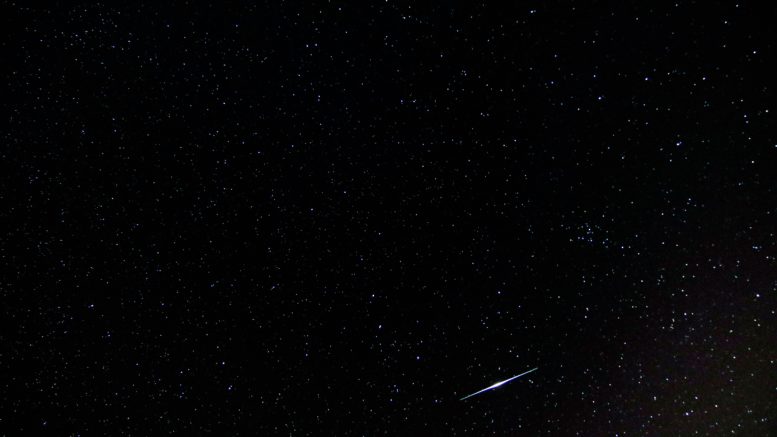This article is going to describe the difference between Planes, and Satellites, and meteors in the sky. It can be tough for newer astronomers to make the determination. Astronomers can use the object Magnitude to describe how bright a star or other object in the sky is, as the lower the number the brighter the object.
The chart below is a great way to provide a sense of how bright items are in the night sky.
- 13: faintest stars seen with a small backyard telescope
- 6: faintest stars seen with the unaided eye on a clear night
- 2: Polaris (North Star)
- -1: Brightest star in the sky (Sirius)
- -5: ISS Space Station
- -6: Venus
- -9: Iridium Flare event (max brightness)
- -12: Full Moon
- -27 Noon Sun
Planes
How to tell a plane from a satellite from the ISS? At night, aircraft, even at very high altitudes are going to be lit with strobes and navigation lights. They will have red and green wingtip lights, a white beacon, and maybe a flashing strobe. Although they might not make noise, planes will always have flashing lights that are easy to see, once one knows what to look for. When taking wide field astrophotography for a longer exposure, one can tell a plane trail because they are almost always solid lines with hashed or dotted lines on either side.
Satellites
Unlike planes, which have lights, satellites will often move across the sky at a slower speed without the lights. The International Space Station is the exception that it travels really quickly, which will be discussed below. Most satellites rotate from west to east, but if you see a north to south (or south to north) travel path, it tends to be a military, mapping, or surveillance satellite. This kind of orbit allows the entire earth to pass underneath within a few days for better surveillance. When taking wide field astrophotography, the trails from satellites are solid lines that are the same brightness from one end point to the other. They do not taper in and out like a meteor.

International Space Station (ISS)
The International Space Station, or ISS, is one of the most expensive items ever built. That said, it is an absolute marvel to see it flying through the sky. The ISS flies orbits the Earth every 90 minutes, so there is the potential to see the the ISS several times

Meteors
When seeing meteors, they will come and go very quickly from specific constellations depending on the When looking at meteors, here are a few tips:
- Meteors taper in from nothing or a very thin path at the start point and taper out again at the end of the path.
- They move faster than planes and satellites, and thus often appear in only one frame, possibly two (depending on your exposure length).
- They can be many different colors, depending on if they flare up during entry.
- When taking wide field astrophotography, meteors will almost always appear in only one frame, because they move fast and burn out quick!

Be the first to comment on "Satellites, Planes, and Meteors, oh my!"